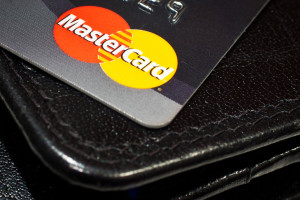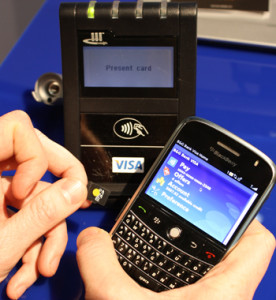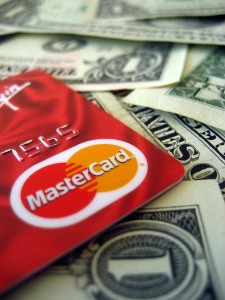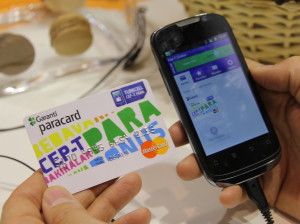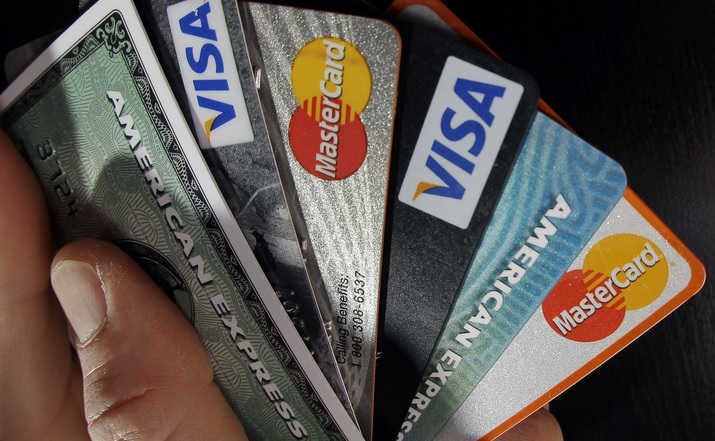
April 12th, 2016 by Elma Jane
Bank Identification Number or (BIN) is the link between the customer and their credit, debit, prepaid or gift card.This help merchants identify the card, its owner, and the issuing bank. The first six digits are used to identify the issuing bank. These six digits are the Bank Identification Number (BIN).
What is a BIN LookUp and how can it help merchant?
The BIN and additional data about the card and the bank can be stored in a database since every card is associated with a bank. BIN lookup allows any merchant or institution doing card based transaction to check more about the transaction other than ensuring that the correct pin has been provided.
BIN LookUp gives the merchant added security and a number of benefits.
- Protection against fraud and reversals of payments. Bank institution allow merchants a limited number of reversals and fraud before stopping their card privileges, and each card chargeback costs you money.
- Permits a closer monitoring of the sales process. Who, what and where? Using these details you can service your customers better.
- You can also gain from using the BIN system if you issue your customers’ gift card or pre-loaded cards.
How Can BIN LookUp or Cardholder Bank LookUp Help Merchants?
Utilize the Cardholder Bank Lookup when you need to inquire about which bank issued a particular card. Simply enter the first six digits on the card and you will receive the information on the issuing bank, including contact information. Merchant Connect BIN lookup data is accurate, it is an added protection to your business, assets, and your financial transactions.
For your payments technology needs, give us a call at 888-996-2273
Posted in Best Practices for Merchants, Travel Agency Agents Tagged with: bank, cardholder, chargeback, credit, customer, database, debit, financial, fraud, gift Card, merchants, payments, prepaid, Security, transaction

December 10th, 2015 by Elma Jane
WALMART LAUNCHES QR CODE MOBILE PAYMENTS SERVICE
Customers at US retail giant Walmart will soon be able to pay for purchases by scanning a QR code at the point of sale using Walmart Pay. Walmart Pay will be integrated into the Walmart app, the retailer’s own mobile payment service introduced in selected stores this month, with a nationwide launch expected in the first half of next year.
With this launch, Walmart becomes the only retailer to offer its own payment solution that works with any iOS or Android device, at any checkout lane, and with any major credit, debit, prepaid or Walmart gift card all through the Walmart mobile app.
Walmart Pay will allow for the integration of other mobile wallets in the future.
http://www.nfcworld.com/2015/12/10/340527/walmart-launches-qr-code-mobile-payments-service-in-the-us/
Posted in Best Practices for Merchants, Mobile Payments, Mobile Point of Sale, Point of Sale Tagged with: credit, debit, gift Card, mobile payment, mobile payment service, mobile wallets, payment service, payment solution, point of sale, prepaid
May 29th, 2014 by Elma Jane
New enhancements intended to provide its U.S. cardholders with greater protection from fraud and identity theft has been announced by MasterCard.
All MasterCard credit, debit, prepaid and small business cards issued in the U.S. will now carry Identity Theft Resolution assistance. MasterCard new program will provide help in canceling missing cards and alerting credit reporting agencies, as well as targeting searches to detect if stolen personal and confidential data appears online. The new Identity Theft coverage extension begins in July 2014.
MasterCard is also extending its zero liability policy in the U.S. to include all MasterCard PIN-based and ATM transactions. This is in addition to coverage already provided on signature debit and credit transactions. The Zero Liability coverage extension takes effect in October 2014.
Fraud prevention and detection is a 24/7 job at MasterCard. The changes in cardholder protection is a combined efforts to move the U.S. payments industry to EMV chip technology will help deliver safer shopping experiences to consumers. MasterCard noted that tanks and financial institutions issuing MasterCard-branded cards provide financial indemnity against fraud.
Posted in Credit card Processing, Credit Card Security, EMV EuroPay MasterCard Visa, Visa MasterCard American Express Tagged with: ATM transactions, business cards, cardholders, credit, credit reporting agencies, credit transactions, data, debit, EMV, EMV chip technology, financial institutions, fraud, Fraud prevention, identity theft, Identity Theft Resolution assistance, MasterCard, payments industry, PIN, prepaid, zero liability policy
April 15th, 2014 by Elma Jane
Amsterdam, Netherlands-based Cardis has been piloting its technology in Europe with Raiffeisen Bank in Austria and Sberbank in Russia. They are now focused on the U.S., as this is the fastest growing mobile payments market in the world, where there’s a huge opportunity. Integration of technology with a large U.S. processor and with a major U.S. retail brand, which will be launching a mobile site and mobile app using Cardis solution.
Cardis International is planning an April launch in the U.S. for its technology, which enables merchants to accept low-value contactless or mobile payments without incurring high processing charges. Cardis is able to bring down the processing cost of low-value payments, the company said, by aggregating multiple transactions into a single payment.
The problem
Contactless card and NFC-based mobile payments are typically for low amounts, and yet still use a card processing infrastructure that was designed 40 years ago when the average credit card transaction was $100.
Traditional card processing systems require each transaction to be individually processed through the payment system, including authorization, clearing and settlement. The resulting variable costs of processing each transaction are independent of the transaction amount and too high for low-value payments, particularly in low-margin industries such as quick-service restaurants. QSR restaurants often have a 3 percent profit margin, yet, for low-value contactless payments, the processing cost could be as high as 6-7 percent of the transaction value.
Mobile and contactless cards offer consumers a convenient form factor. But they don’t solve the problem that low-value card payments are very expensive for merchants.
As an ever-increasing percentage of transactions have become cashless, card processing fees have become a significant cost. Costs that are based on the number of transactions, rather than their value. With average per person expenditures of $5 or under, feels each swipe fee much more than a business where customers spend $50 or more. But not accepting credit/debit cards for low-value transactions isn’t an option as many of customers don’t carry cash anymore.
Aggregation
Cardis’ solution is to act as an aggregator of low-value payments, sending a single batched transaction through to a processor instead of multiple low-value transactions. As there is no per transaction processing of individual low-value purchases, the cost-per-transaction is significantly reduced.
Cardis provides its technology as a software plug-in to payment service providers for contact-based and contactless card payments, mobile wallet transactions and NFC payments.
There are two models. For card payments, it will aggregate multiple purchases by an individual cardholder at a single merchant on a post-paid basis up to a specific amount, for example $20. To guarantee payment to the merchant, since the aggregated transaction is processed at a later date, it will pre-authorize an amount, for example $15, the first time the customer makes a purchase at that merchant.
Alternatively, merchants can opt for Cardis’ prepaid system. This involves the consumer setting up a prepaid account hosted by Cardis’ sponsoring bank that is topped up via ACH (automated clearing house) transfers. Using the Cardis prepaid account on a smartphone provides the digital equivalent to cash.
With its post-paid solution, merchants will save 30-50 percent per transaction compared to conventional card processing fees, while its prepaid solution saves merchants 80 percent per transaction. With the post-paid solution, it will only aggregate a customer’s purchases at a single specific merchant. But, as the prepaid solution aggregates the customer’s purchases across multiple merchants, this enables to offer a much lower processing fee to the merchant.
Cardis provides an audit trail enabling consumers to track individual transactions that are aggregated using its technology. Consumers don’t lose any of their card protection rights and guarantees by agreeing to let a merchant aggregate their payments through Cardis. They can always charge back any disputed transactions.
Cardis sees opportunities for digital content providers such as online music stores and games providers to use its aggregation technology. It can integrate solution with existing digital wallets.
Raiffeisen
In 2012, Austria’s Raiffeisen Bank launched a pilot of Cardis technology for NFC-based Visa V Pay debit card payments in partnership with Visa Europe. Raiffeisen’s MobileCard mobile payment product uses a secure element stored on an NFC-enabled MicroSD card inserted in a mobile phone. Although Cardis supports secure elements stored on SIM cards as well as on MicroSD cards and on the cloud, Raiffeisen opted for MicroSD cards, as this is an easier solution to implement.
Raiffeisen cardholders participating in the pilot use MobileCard on average three times a week, with an average transaction value of ($5.70). Merchants accepting MobileCard are seeing 40 percent to 70 percent lower merchant processing fees for an average transaction value of ($5.43) to ($13.60).
Spindle
In October 2013, Spindle, a U.S. mobile commerce company, signed an agreement with Multi-max, a manufacturer of vending machines for mid-size and small offices throughout North America, Europe and Asia. Spindle will integrate its MeNetwork mobile commerce technology into Multi-max’s line of K-Cup vending machines for rollout across the U.S.
The MeNetwork solution will incorporate all card-based payment acceptance services, as well as mobile marketing services. Spindle’s partner Cardis will provide low-value payment processing services for purchases at K-Cup vending machines.
Posted in Credit card Processing, Credit Card Security, Digital Wallet Privacy, e-commerce & m-commerce, Electronic Payments, Gift & Loyalty Card Processing, Internet Payment Gateway, Mobile Payments, Mobile Point of Sale, Near Field Communication, Payment Card Industry PCI Security, Smartphone, smartSD Cards, Visa MasterCard American Express Tagged with: accept, ach, aggregated, aggregation, aggregator, authorization, automated clearing house, average transaction, batched, card payments, card processing infrastructure, card processing systems, card-based payment acceptance, cardholders, clearing, contactless, contactless payments, cost-per-transaction, credit card transaction, debit card payments, Digital wallets, high processing charges, low-value payments, merchant aggregate, Merchant's, microSD, mobile app, mobile commerce, mobile payment, Mobile Payments, mobile site, mobile wallet transactions, nfc-based, payment service providers, pre-authorize, prepaid, processed, Processing, processing cost, processing fees, processor, settlement, smartphone, transactions, transfers
December 5th, 2013 by Elma Jane
Recently, Consumer Reports reviewed 26 different prepaid cards and evaluated them based on different factors. The cards Consumer Reports considered to be the best scored well in each of these four factors:
- Clarity of Fees — How well the fees are disclosed.
- Convenience — Availability of in-network ATMs, bill pay features and how widely the card network brand is accepted.
- Safety — Whether funds are protected with FDIC deposit insurance.
- Value — How much they cost to use.
This is the first time Consumer Reports has evaluated and ranked prepaid cards, revealing a shift in the market for prepaid. As prepaid cards continue to grow in popularity, consumers are going to become savvier about which prepaid cards they purchase. Consider taking a closer look at this Consumer Report to determine how your financial institution’s (FI’s) prepaid offering measures up.
Highest ranked cards are those like the ATIRA suite of prepaid cards TMG’s clients issue. They have fewer fees and make it easier for consumers to avoid them, carry FDIC insurance for each cardholder, offer features comparable to traditional checking accounts and do a better job of disclosing fees.
Not surprisingly, the worst prepaid cards reviewed scored poorly in at least one, and sometimes several, of the above categories. All of the lowest ranked cards have high, unavoidable fees, including activation and monthly fees. Additionally, the lower scoring cards fail to make their fees clear and easy for consumers to access and understand.
Specifically, the report found some prepaid cards fail to provide clear explanations of how to use features such as electronic payments, text alerts and mobile remote deposit capture, and the fees that may be charged for them. Further, while all of the cards reviewed claim to offer some form of protection for consumers, the report found in these policies are often not clearly defined.
Consumer Reports also found it problematic that although issuers provide safeguards voluntarily, they can cancel them at any time. Additionally, according to the report, fee information is often hard to find and difficult to understand. The report states this problem is compounded by the lack of consistency with fee names and descriptions” from card to card, making it challenging for consumers to compare fees and costs. Consumer Reports also found that prepaid cards offered by some of the big banks are not necessarily less expensive than other prepaid cards. Also, these big bank offerings may be less attractive to consumers because they often don’t provide the option of making both electronic payments and payment by paper check.
Posted in Credit card Processing, Financial Services Tagged with: accounts, activation, ATMs, banks, bill pay, card network, cardholder, cards, costs, deposit, electronic payments, fees, financial institution, In-network, insurance, mobile remote deposit capture, monthly fees, paper check, prepaid, text alerts
December 2nd, 2013 by Elma Jane
U.S. Bank has announced the U.S. Bank Contour Card – saying that the new card gives customers the convenience of a debit card, the control of a bank account and the freedom of cash. Giving customers innovative options to manage their finances. The Contour Card is the latest example. It’s a great tool to manage expenses by giving you the power to budget your money across multiple prepaid cards under the same account. Customers can use Contour as their primary payment card, but it is also a good fit for anyone who wants a new way to manage money.
Contour gives control over your spending in so many ways. From tracking your spending to transferring money between accounts, Contour gives customers the ability to manage it all from one location through their personal My Contour Dashboard.
Cardholders can open up to five additional card accounts that can be linked to their primary account. Cardholders can use Contour anywhere Visa Debit cards are accepted, get free cash withdrawals at any U.S. Bank or MoneyPass ATMs, and direct deposit paychecks to their accounts at no additional charge.
Posted in Financial Services Tagged with: account, ATMs, budget, card, cardholders, debit card, deposit, finances, money, MoneyPass, paychecks, prepaid, tracking, tranferring, U.S. Bank, US Bank, visa, withdrawals
October 28th, 2013 by Elma Jane
With banks and shops starting to let customers pay by tapping their smart phones on terminals in stores, the future of plastic credit cards is looking shaky.
MasterCard, which has teamed with Coles and CommBank on these ventures, yesterday said Australians were rapidly embracing contactless payments using PayPass and rival Visa’s payWave. At Coles, six out of 10 MasterCard and Visa payments were contactless.
MasterCard head of market development and innovation for Australasia said three out of 10 MasterCard terminal payments were contactless and there were now more than 175,000 terminals nationwide that could accept them. More than 10 million MasterCards in Australia could make contactless payments.
An EMV (Europay, MasterCard and Visa) standard meant all terminals were capable of handling different brands of contactless payments.
The first stage of the contactless payments or “tap and go” revolution began with Visa payWave and MasterCard PayPass in Australia and the first institution to make contactless payments available locally was the Commonwealth Bank in 2006.
The next stage is to use smartphones rather than just plastic cards for contactless payments. Customers still use their Visa and MasterCard accounts, but the transaction is effected using a Near Field Communication sticker placed on the back of the phone, or an embedded, secure NFC element inside modern Android smartphones.
In Europe, NFC-enabled watches, wristbands, key rings and fobs also were being used for contactless payments and there was no reason this couldn’t happen here.
Visa said it had made a “significant investment” in a mobile NFC ecosystem.
“Visa is working closely with partners like Samsung, Vodafone and Optus on a range of mobile payment solutions that use the secure element and prepaid SIM models.”
CommBank, which previously enabled contactless payments from an iPhone housed in a special case, last week said it would let customers pay directly from their Apple phone using an NFC sticker, and from newer Android phones with embedded secure NFC technology.
The new facility, to be rolled out in the current financial year, is part of a revamp of the bank’s smartphones apps.
Coles said contactless payments had increased in the past year by more than 70 per cent while CommBank’s volume of contactless payments had increased six fold in 12 months. Westpac said it was piloting an Android mobile contactless payment application and was also investigating smartwatch payments.
“We also believe that the next big trend after the rise of mobiles and NFC in Australia will be mobile checkouts, where shoppers purchase products and have them delivered within two or three clicks,” a spokeswoman said, and the moves were “as big a market shift as we’ve ever seen”.
Coles also announced a trial of its own contactless payments technology using NFC stickers. Funds would be drawn from Coles Rewards MasterCards. Some 5000 mobile phone tags would be issued in a trial.
ANZ said it was continuing its trial of a mobile wallet for Android phones begun last year, ahead of making the solution available to customers.
“Our NFC pilot with Samsung and Optus is tracking well and we’re also investigating other payment options such as QR codes,” an ANZ spokesman said.
“Given the fragmentation of the market, we will continue to monitor developments before finalising how we will bring a viable mobile wallet solution for our customers to market.”
St George Bank chief information officer said his bank planned to have a contactless phone payments solution in the market “sometime in 2014”.
The bank has previously been reported to be looking at payments via the Pebble and Samsung smart watches.
National Australia Bank, which unveiled its peer-to-peer payments app, NAB Flik, last month, said it was watching how the contactless payments market developed with “less focus on being first to market and more focus on being best in market.”
The Australian reported last month that Apple and PayPal were exploring an alternative to NFC-enabled contactless payments called iBeacons. When you pass close to a store in a shopping centre, a beacon will detect your phone’s presence and automatically alert you to signature items for sale and specials, or offer other information to lure you inside, and process payments.
CommBank last week told The Australian it was looking at iBeacons technology.
Posted in Credit card Processing, Electronic Payments, EMV EuroPay MasterCard Visa, Near Field Communication, Visa MasterCard American Express Tagged with: accounts, Android, banks, checkouts, contactless, embedded, EMV, EuroPay, fobs, Iphone, MasterCard, mobile, mobile wallet, Near Field Communication, nfc, optus, payments, paypass, paywave, phone, plastic credit cards, prepaid, process payments, qr codes, Samsung, secure, shops, sim, smart phones, Smartphones, smartwatch, sticker, store's, Tags, tap and go, tapping, terminal, terminals, transaction, visa's, vodafone
October 24th, 2013 by Elma Jane
Reflecting recent research that concludes mobile payment adoption remains low, Total System Services Inc. (TSYS) issued results from a survey that confirm consumers prefer banking applications other than payments for their mobile devices.
While reinforcing the dominance of debit and credit cards as payment mechanisms, the TSYS 2013 Consumer Payment Choice Study revealed that mobile devices are used as a tool for ancillary financial services, such as checking account balances and accessing discounts and rewards.
“For now, the hype largely remains hope for mobile from a payments standpoint,” the survey said. “On a relative basis, consumers would overwhelmingly prefer to have the ability to use their smartphone to monitor transaction activity or prevent fraud versus using their mobile phone as a form factor in a transaction.”
Columbus, Georgia-based processor TSYS found in its third annual survey that, out of 1,000 consumers surveyed online in the summer of 2013, 40 percent of respondents were interested in using mobile devices to instantly stop illegitimate transactions. Additionally, 37 percent indicated that the ability to view in real-time the transactions made with debit and credit cards was also an important feature.
Receiving instant offers and promotions from stores being visited (33 percent); temporarily blocking and unblocking purchases using certain bankcards (29 percent); and paying for purchases using reward/loyalty points (28 percent) rounded out the top payment-related uses for smartphones.
At the bottom of the scale was to pay for purchases with mobile wallets (25 percent) and to use credit or debit card-funded prepaid accounts for the same purpose (22 percent). “Industry observers regard mobile payments as an assumed eventuality,” TSYS stated. “Our survey results indicate that consumers are presently more interested in increased non-payment functionality on their mobile device.”
But the processor remains optimistic about the promise of mobile payments. “We believe that as the infrastructure matures and the ability to use mobile payments becomes more widespread, this trend will change,” TSYS said.
Prepaid undermarketed?
In addressing the role of prepaid cards in the payment mix, TSYS expressed surprise that prepaid cards are apparently not being marketed aggressively by financial institutions. The processor noted that major banks jumped into the prepaid card industry in 2012 to offer general-purpose reloadable (GPR) prepaid cards as checking account alternatives.
But TSYS found that just over 10 percent of survey respondents indicated they had received GPR card offers from their banks. TSYS attributed that low percentage to the fact that the survey respondents were by default credit and debit card users, while GPR cards are primarily targeted to individuals without access to credit or debit cards.
Regardless, survey respondents aged 35 and younger accounted for 64 percent of those who had received such offers. “It could be that the younger demographic on average represents a less profitable checking relationship for banks, or that banks perceive them to be more receptive to the offering,” TSYS said.
Steady goes debit and credit
Consumer payment preferences in 2013 remain relatively unchanged from previous years, according to TSYS. Debit still trumps credit as the preferred payment instrument overall, with both methods being favored by every eight of 10 survey respondents. Debit is still the clear winner when it comes to supermarket shopping and gas purchasing, while credit is preferred when dining out and shopping in department stores. But when it comes to fast food cravings, cash is still king.
On the opposite end of the spectrum, and also consistent with TSYS’ 2012 report, only 11 percent of respondents said being able to set up text message alerts for account balances and transactions was most valuable, and a mere 6 percent valued the ability to register payment cards in mobile wallets.
However, credit tops debit for online purchases, TSYS said. Further of note is that PayPal Inc.’s digital wallet service rivals debit online, with both payment methods favored by roughly one-fifth of respondents. But for small-dollar purchases, like coffee and donuts, cash remains the preferred payment vehicle, despite innovative mobile schemes offered by companies like Starbucks and Dunkin’ Donuts.
Posted in Credit card Processing, Digital Wallet Privacy, e-commerce & m-commerce, Electronic Payments, Gift & Loyalty Card Processing, Internet Payment Gateway, Mail Order Telephone Order, Merchant Services Account, Mobile Payments, Smartphone Tagged with: account, adoption, applications, banking, checking, consumers, credit cards, debit, devices, discounts, financial services, form factor, general-purpose, gpr, infrastructure, low percentage, mechanisms, mobile, mobile wallets, non-payment, offers, online, payment, payment related, phone, prepaid, processor, profitable, promotions, real-time, reloadable, reward/loyalty, rewards, smartphone, transaction, tsys


